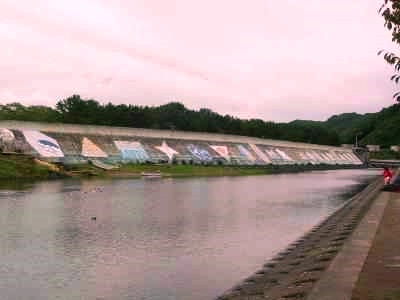In Japan the constructions of seawalls in the last decade are continued, and at least two massive antitsunami seawalls are under construction. One in Kuji, a city in Iwate Prefecture that was damaged in Friday’s tsunami, was scheduled to be completed soon.
The sea wall in Taro (Tarou), was regarded as one of the most robust anti-tsunami accomplishments in the world.
So far it seems that most residents got to higher ground.
It is about 10 meters (30 feet tall).It was constructed after the 1933 Sanriku earthquake when a tsunami destroyed the village.
The
village of Tarou tucked behind its tsunami wall. This was built in
response to successive tsunami which destroyed the town in 1896 and
again in 1933.
The 10m wall wasn't high enough for this one. The water topped the wall and ran up destroying most of the houses in this photo, and also started fires. Entry to the town was opened Sunday AM as rubble blocked both highway tunnels into town.  |
Taro tsunami wall 田老 |
Mrs. Yoshi Tabata, a survivor as a small girl of the 1933 tsunami, has been teaching everyone in town to keep their shoes nearby, leave with the first shudder of the earthquake, and know the path to high ground in the dark.
 |
Taro fishing port's tsunami barrier (wall) - 田老町 |
 |
The tsunami's wave crashed over a street after an earthquake struck the area on Friday, Miyako, Northeastern Japan
|